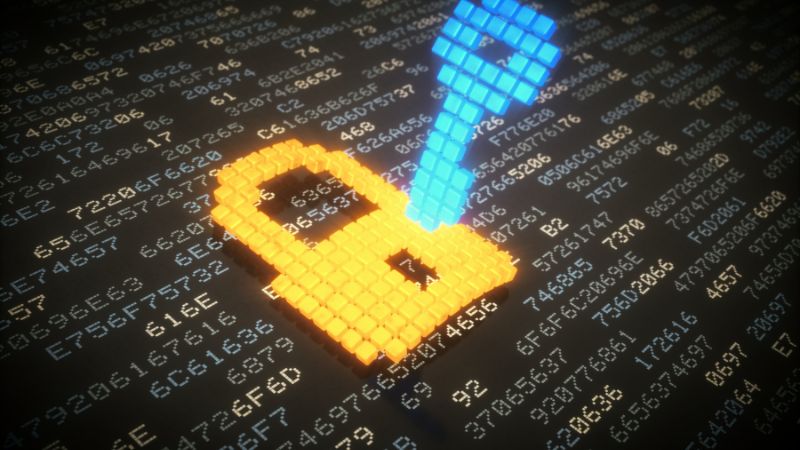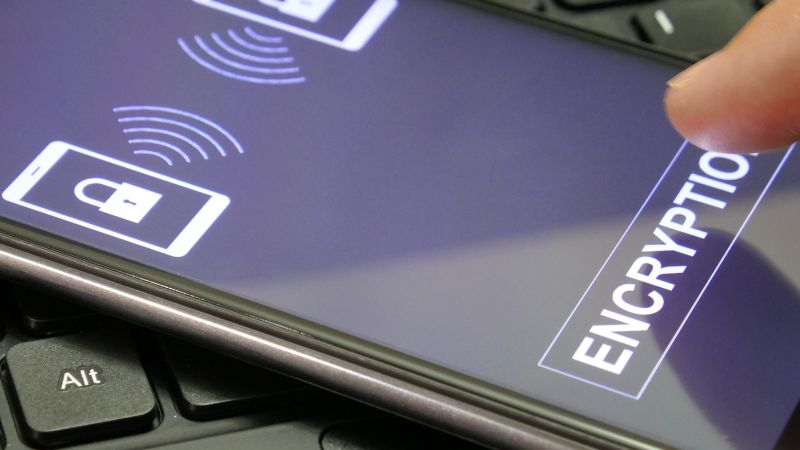Imagine sending a secret message to a friend. You’d want it to stay private, right? That’s where encryption methods come in. They’re like digital locks that keep your data safe from prying eyes. Whether it’s your emails, WhatsApp chats, or online banking, encryption ensures your information stays secure. In today’s world, where cyber threats are everywhere, understanding symmetric encryption, asymmetric encryption, and end-to-end encryption is crucial. This blog dives into these encryption methods, explains how they work, and shares practical tips to protect your data. Ready to unlock the secrets of encryption? Let’s get started!
Table of Contents
ToggleWhat Are Encryption Methods?
Encryption is the process of scrambling data so only authorized people can read it. Think of it as turning your message into a puzzle that only the right key can solve. There are two main types of encryption methods: symmetric and asymmetric. Plus, there’s end-to-end encryption, a buzzword you’ve probably heard in apps like WhatsApp. Let’s break them down.
Symmetric Encryption: The Shared Secret

Symmetric encryption uses one key to both lock (encrypt) and unlock (decrypt) data. It’s like a single key that opens a safe. Both the sender and receiver need this key, making it fast and efficient.
How it works: The same key scrambles and unscrambles the message.
Example: AES (Advanced Encryption Standard) is a popular symmetric encryption algorithm used in secure websites (HTTPS) and VPNs.
Pros:
Super fast for large amounts of data.
Simple to implement.
Cons:
Sharing the key securely is tricky.
If the key is stolen, your data is at risk.
Which of the following is an example of symmetric encryption? AES, DES, and Blowfish are all examples. If you’re securing a file on your computer, symmetric encryption is often the go-to choice.
Asymmetric Encryption: Two Keys, Double Security

Asymmetric encryption uses two keys: a public key to encrypt and a private key to decrypt. It’s like a mailbox—anyone can drop a letter in (public key), but only you can open it (private key).
How it works: The public key is shared openly, while the private key stays secret.
Example: RSA is a common asymmetric encryption algorithm used in secure email and SSL/TLS for websites.
Pros:
No need to share a secret key, making it safer for communication.
Great for digital signatures and secure key exchange.
Cons:
Slower than symmetric encryption.
Requires more computational power.
Which of the following best explains how symmetric encryption algorithms are typically used? Symmetric encryption is often used for encrypting large data sets, like files or database backups, while asymmetric encryption secures key exchanges or small data transfers.
End-to-End Encryption: Ultimate Privacy

End-to-end encryption ensures that only the sender and receiver can read the message—no one else, not even the service provider. It’s like a sealed envelope that only the recipient can open.
How it works: Data is encrypted on the sender’s device and only decrypted on the receiver’s device.
Example: WhatsApp and Signal use end-to-end encryption for chats.
Pros:
Maximum privacy, even from hackers or app providers.
Ideal for sensitive communications.
Cons:
Requires both parties to use compatible apps.
Can’t recover messages if keys are lost.
Symmetric vs. Asymmetric Encryption: When to Use Each
Choosing between symmetric and asymmetric encryption depends on your needs. Here’s a quick guide:
Use symmetric encryption when:
You need speed, like encrypting large files or streaming data.
The key can be shared securely (e.g., within a closed system).
Example: Encrypting a hard drive with AES.
Use asymmetric encryption when:
You’re sharing data over an insecure channel, like the internet.
You need secure key exchanges or digital signatures.
Example: Sending an encrypted email with PGP (Pretty Good Privacy).
When to use both: Many systems combine them. For instance, HTTPS uses asymmetric encryption to exchange a symmetric key, then symmetric encryption for the actual data transfer. It’s the best of both worlds!
End-to-End Encryption in Action
You’ve probably seen “end-to-end encrypted” pop up in apps like WhatsApp or Signal. But what does it mean for you? Let’s explore how to use it and why it’s a game-changer.
How to Enable End-to-End Encryption in WhatsApp
WhatsApp automatically enables end-to-end encryption for all chats. You don’t need to do anything! But here’s how to verify it:
Open a chat: Go to the chat you want to check.
Tap the contact’s name: At the top, tap their name to view details.
Check encryption: Look for “Encryption” and tap to verify the security code. You can scan the QR code in person or compare the numbers.
Why it matters: This ensures no one, not even WhatsApp, can read your messages.
Pro tip: If you see a warning that the security code has changed, it might mean your contact got a new phone. Verify the code to stay secure.
Can You Turn Off End-to-End Encryption in Messenger?
Facebook Messenger offers end-to-end encryption for “Secret Conversations,” but it’s not on by default. You can’t turn off end-to-end encryption once a secret conversation starts, but you can switch to a regular chat, which isn’t end-to-end encrypted.
How to start a secret conversation:
Open Messenger and tap the pencil icon.
Toggle “Secret” in the top-right corner.
Select a contact and start chatting.
Why not turn it off? End-to-end encryption is optional in Messenger to balance privacy with features like cross-device syncing, which isn’t possible with full encryption.
Note: For maximum privacy, stick to apps like Signal, where end-to-end encryption is always on.
Email Encryption Methods: Keeping Your Inbox Safe
Emails are like postcards—anyone can read them unless you encrypt them. Let’s look at email encryption methods to secure your inbox.
1. PGP (Pretty Good Privacy)
PGP uses asymmetric encryption to secure emails. You share your public key with others, and they use it to encrypt messages only you can decrypt with your private key.
How to use it:
Install a tool like GPG or Mailvelope.
Generate a key pair (public and private).
Share your public key via a key server or directly.
Best for: Tech-savvy users who want maximum control.
2. S/MIME (Secure/Multipurpose Internet Mail Extensions)
S/MIME also uses asymmetric encryption but relies on certificates issued by trusted authorities.
How to use it:
Get a certificate from a provider like Actalis or DigiCert.
Install it in your email client (e.g., Outlook, Thunderbird).
Sign and encrypt your emails.
Best for: Businesses or users with enterprise email systems.
3. End-to-End Encrypted Email Services
Services like ProtonMail and Tutanota offer built-in end-to-end encryption for emails.
How they work:
Emails are encrypted on your device before they leave.
Only the recipient with the right key can decrypt them.
Best for: Beginners who want a hassle-free solution.
Actionable tip: If you’re new to email encryption, start with ProtonMail. It’s user-friendly and doesn’t require manual key management.
5 Tips to Master Encryption Methods
Ready to take control of your data’s security? Here are five actionable tips to use encryption methods like a pro:
Combine symmetric and asymmetric encryption:
Use asymmetric encryption to share a symmetric key securely.
Then, use symmetric encryption for faster data transfer.
Example: HTTPS websites do this automatically.
Use end-to-end encrypted apps:
Switch to apps like Signal or WhatsApp for private chats.
Verify security codes with contacts for extra safety.
Encrypt your emails:
Try ProtonMail for automatic end-to-end encryption.
For manual control, learn PGP with tools like GPG.
Keep your keys safe:
Store private keys in a secure password manager or hardware device.
Never share your private key with anyone.
Stay updated:
Encryption algorithms evolve. Stick to modern standards like AES-256 or RSA-2048.
Avoid outdated algorithms like DES, which are vulnerable.
Key takeaway: Encryption isn’t just for tech wizards. With the right tools, anyone can secure their data.
Real-World Examples of Encryption Methods
Let’s see encryption methods in action:
Symmetric encryption: When you zip a file with a password using WinRAR, it uses AES to encrypt the contents. Only someone with the password can unzip it.
Asymmetric encryption: When you visit a website with “https://” in the URL, your browser uses RSA to establish a secure connection with the server.
End-to-end encryption: When you send a WhatsApp message, it’s encrypted on your phone and only decrypted on your friend’s phone. Even WhatsApp can’t read it.
These examples show how encryption methods protect you every day, often without you noticing!
Conclusion: Stay Secure with Encryption Methods
In a world full of cyber threats, encryption methods are your best defense. Whether you’re using symmetric encryption for fast file protection, asymmetric encryption for secure emails, or end-to-end encryption for private chats, understanding these tools empowers you to stay safe online. Start small—try ProtonMail for emails or verify WhatsApp’s encryption. With the tips and examples in this guide, you’re ready to take control of your digital security.
Final thought: Encryption isn’t just tech jargon; it’s your shield in the digital age. Embrace encryption methods today, and keep your data locked tight!
FAQs About Encryption Methods
What is the difference between symmetric and asymmetric encryption?
Symmetric encryption uses one key to encrypt and decrypt data, making it fast but less secure for key sharing. Asymmetric encryption uses a public key to encrypt and a private key to decrypt, ideal for secure communication over the internet.
How do I enable end-to-end encryption in WhatsApp?
End-to-end encryption is enabled by default in WhatsApp. To verify, open a chat, tap the contact’s name, and check the encryption status. You can scan the QR code or compare the security code with your contact.
Can I turn off end-to-end encryption in Messenger?
You can’t turn off end-to-end encryption in Messenger’s “Secret Conversations,” but you can switch to regular chats, which aren’t end-to-end encrypted. Start a secret conversation by toggling “Secret” when starting a new chat.
Which encryption method is best for emails?
For ease, use end-to-end encrypted services like ProtonMail. For manual control, PGP or S/MIME are great, with PGP being more flexible and S/MIME better for enterprise use.
When should I use symmetric vs. asymmetric encryption?
Use symmetric encryption for speed and large data, like file encryption. Use asymmetric encryption for secure key exchanges or small data transfers, like email encryption.
Is end-to-end encryption safe?
Yes, end-to-end encryption is very safe because only the sender and receiver can access the data. Even the service provider can’t read it. Apps like Signal and WhatsApp use it for maximum privacy.








